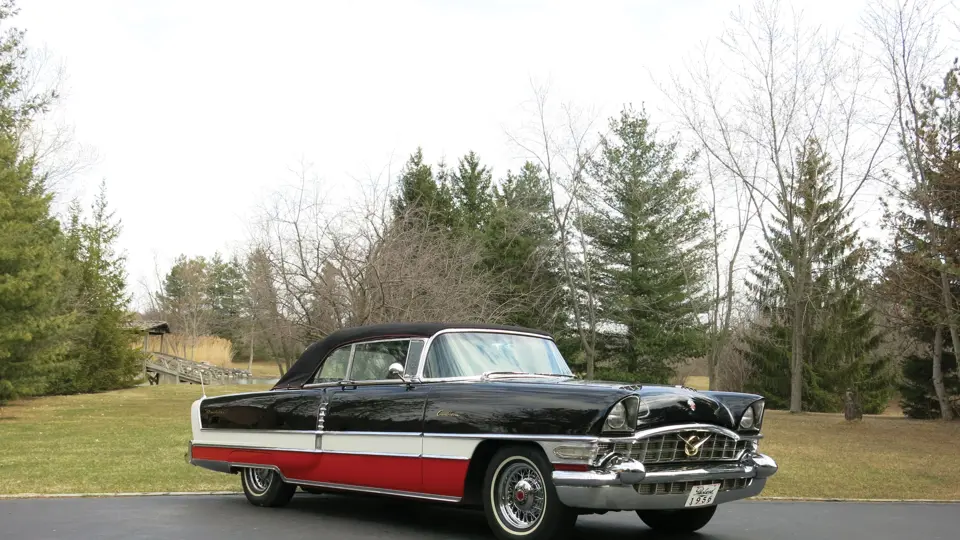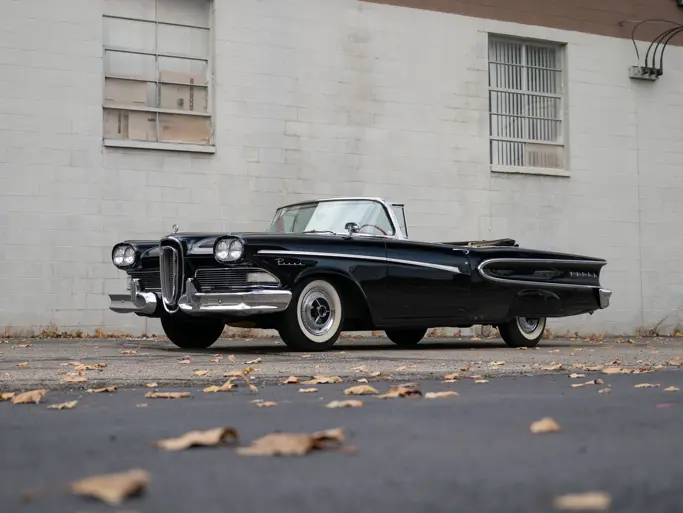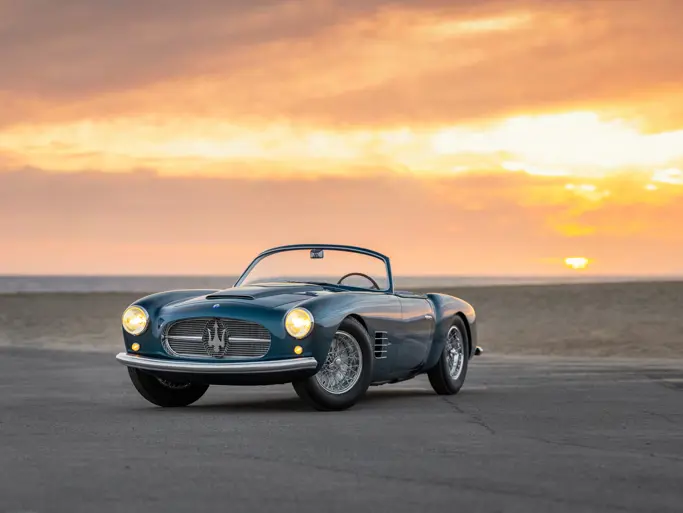It is more than ironic that Packard, one of the most iconic names in America, would fail just as the company introduced what may have been the most innovative and best-designed product line in its history. The fault lay not with the product, rather with a series of management misadventures, the most glaring of which was the ill-fated acquisition of Studebaker.
Waiting until 1955, Packard was the last U.S. automaker to introduce a high-compression V-8 engine. Up until this point, Packard had used an inline, eight-cylinder engine that was based on a 1929 design. While the venerable inline eight was reliable, it was also extremely outdated. Packard's first modern overhead-valve V-8 was physically large and mostly conventional, reflecting many of the first generation Cadillac, Oldsmobile, and Studebaker Charles Kettering design features. It was produced in 320 cubic inch and 352 cubic inch displacements. The Caribbean version had two four-barrel carburetors and produced 275 horsepower. For 1956, a year after Chrysler had announced its 300 horsepower, top-of-the-line engine, Packard announced its 374-cid version which was used in the senior cars, and which, in the Caribbean with its two, four-barrel carburetor arrangement produced 310 horsepower The Caribbean version was the most powerful engine available in an American production car in 1956.
In-house designed and built, Packard’s "Ultramatic" automatic transmission featured a lockup torque converter with two speeds. The early Ultramatics normally operated only in "high" with "low" having to be selected manually. Beginning with late 1954, the transmission could be set to operate only in "high" or to start in "low" and automatically shift into "high.”
Packard's last major development was the William Allison-invented "Torsion-Level" suspension, an electronically controlled four-wheel torsion bar suspension that balanced the car's height front-to-rear and side-to-side, having electric motors to compensate each torsion bar independently. Contemporary American competitors had serious difficulties in attempting to imitate this suspension concept, trying unsuccessfully to accomplish the same result with airbag springs before dropping the idea. In 1956 Packard also introduced the Dana-designed “Twin-Traction” limited-slip differential to complement the Torsion-Level suspension. In combination, it was the finest handling and best riding, full-size car of its time.
The all-new 1955 styling was impressive across the board, as it was modern, fresh and attractive. The top-of-the-line Caribbean featured striking three-tone paint schemes, two-tone leather interiors, and an ornate dashboard and ornamentation layout.
Few changes were made in 1956, although a hardtop coupe was available in the Caribbean for the first time. Most of the updates for 1956 were minor, but one of the most attractive new features was the reversible seat cushions which had two-tone leather on one side, and elegant cloth and leather on the other. At $5,995, the cars were breathtaking, but priced higher than any other American car, save the new Lincoln offering, the Continental Mark II. As a result, and because production was ended on June 25, 1956, Packard was able to sell only a limited number of 1956 Caribbean’s; 276 convertibles and 263 hardtop coupes.
This 1956 Packard Caribbean Convertible is a well-equipped example with chrome Kelsey-Hayes wire wheels, dual mirrors, whitewall tires, radio with dual antennas, clock, power windows, power seat and a power top.
The body appears to be in very solid condition with no evidence of repair or damage. The door fit is good with even gaps and margins. The hood and rear decklid fit the body with proper margins as well. The car has been finished in proper, period Packard tri-toned paint scheme. The black, red and white exterior paint appears to have been repainted several years ago. Today, the paint shows well, but there are certainly signs of wear and aging present. The chrome and stainless trim items are in good to very good overall condition.
This car retains its proper reversible interior. The leather interior is red with black trim and the reversed interior is gray cloth with a white center trim section. Both interior options are in very good condition, although there are some minimal signs of wear present on each option. The door panels, carpets, etc. are in similar condition. The dashboard is in very good overall condition and retains a complete set of clear gauges and controls. The car has been fitted with a black, convertible Haartz top that is trimmed with red piping. The convertible top shows some aging, but is in generally clean condition.
The engine bay is clean, but not well detailed. The engine retains its original dual-quad carburetion system with proper air cleaners. The chassis does not appear to have been damaged or repaired. It has not been recently detailed and shows overall cosmetic signs of wear and deterioration, but is structurally and mechanically solid. The Kelsey-Hayes wire wheels are in good condition with some discoloration and oxidation to the chrome and the tires are older replacements that are in good condition as well.
Overall, this is a good and clean example of one of the most desirable, postwar Packards built.



 | Auburn, Indiana
| Auburn, Indiana


